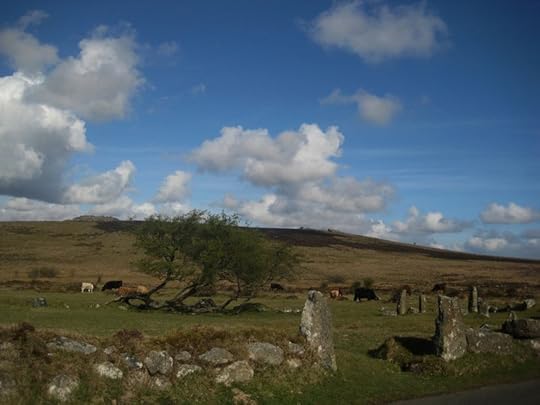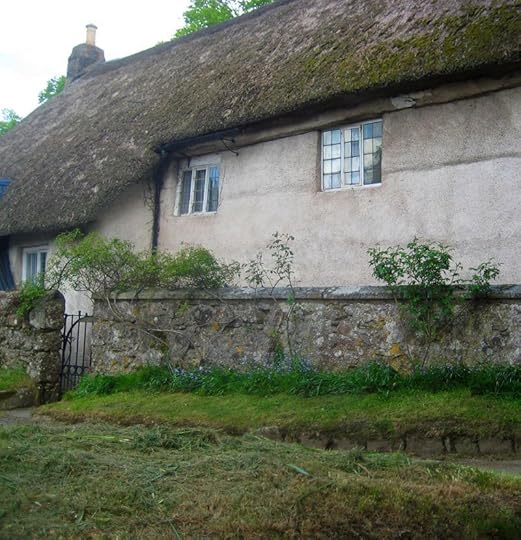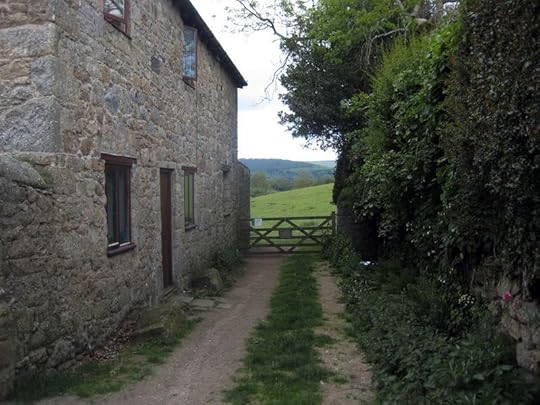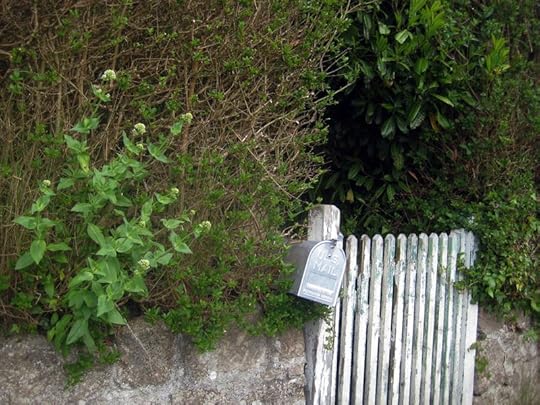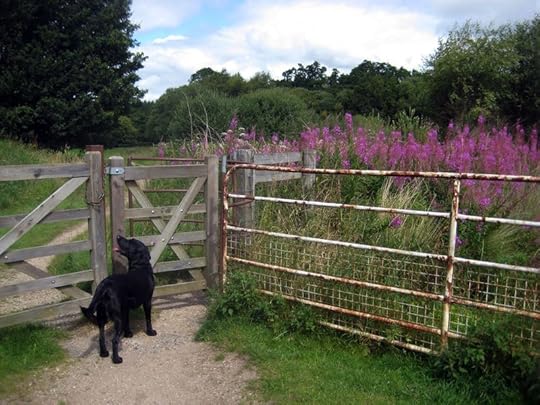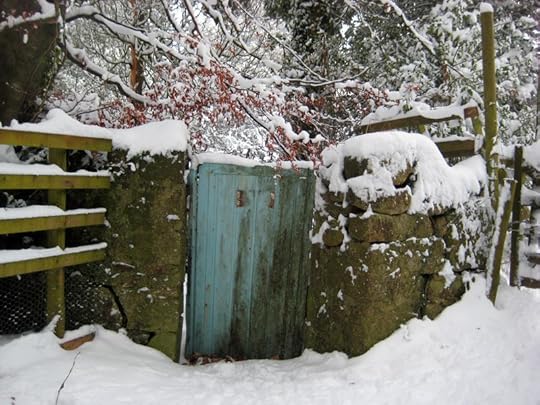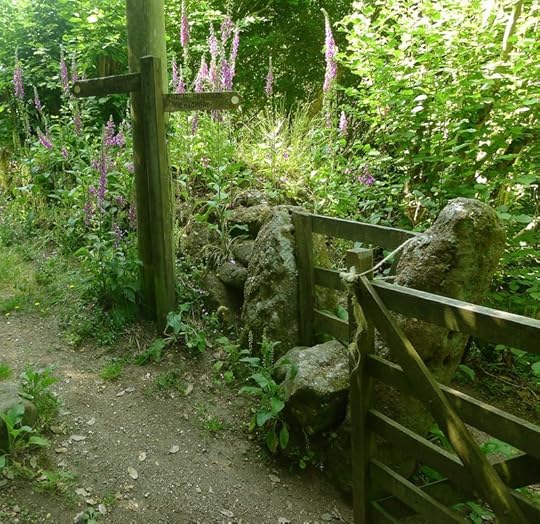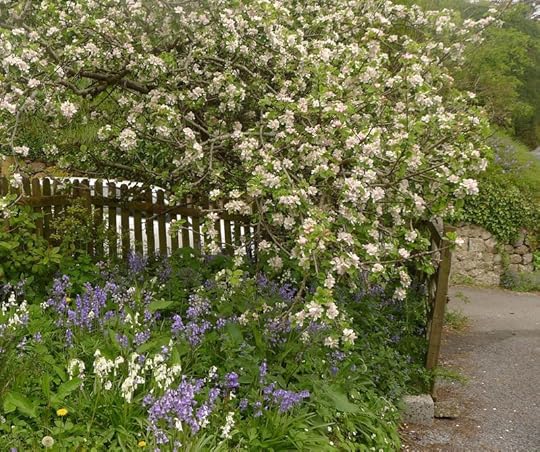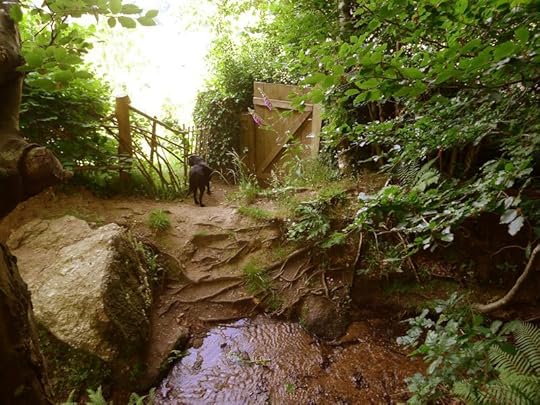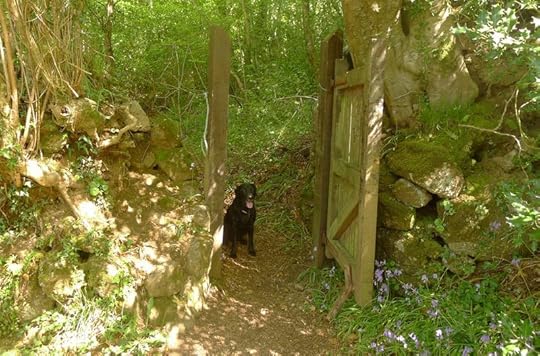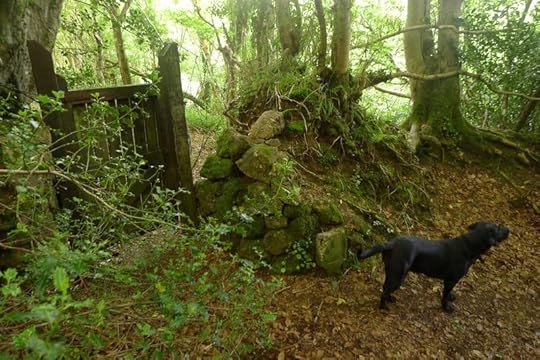Openings, entrances, reminders
One of the most gorgeous essays I've ever read is "(En)trance" by Chris Arthur (The Litery Review, 2008). It's a mediation on the entrance to the grounds of Shandon, his family's estate in Northern Ireland, consisting of two brick pillars (minus an iron gate that was melted down in World War II), a curved stretch of boundary wall, and the laurel thickets close by. Despite this tight focus, we are gifted with vivid flashes of Shandon's long history while also reflecting on the nature of time and myths of borders and edges...all so beautifully written that I felt breathless and a little light-headed when the essay was done.
Arthur, whose chosen form is the essay, compares himself to the kind of writer he'd assumed he would be when he was younger: a novelist; and thus "(En)trance" is also an exploration of the differences between these literary genres, and the ways that different writers might make use of the Shandon setting.
"Since writers of the sort I'm not aren't constrained by the boundaries of what happened, " he tells us, "it would be easy to invent all manner of stories about love and lust, about class and religion, about Englishness and Irishness, war and poverty....It's tempting to succumb to such diversions, to sweep through the pillars dramatically, making an entrance that draws the eye toward the unfolding of some vivid story, baited perhaps with rape or murder or the compelling simplicity of some other violently eye-catching beginning. But, for whatever reason, my interest is set in a key that eshews the racy harmonics of such narratives, even though I'm partial to them and often like to hum along.
"The entrances that intrigue me lead to less obvious destinations than the Big House with its cast of characters. For me, the pillars don't just suggest the domestic scale of a habitation and its dwellers. They also bring to mind pillars as ancient religious markers erected on the earth to make some claim to the numinous, to post a reminder of entrances beyond the obvious. These upright markers can be found scattered through the landscapes of many countries. Their style and date may vary; they may have been raised on the occasion of covenant, sacrifice, or worship. But for all their seeming variety, and despite their dense solidity, such pillars serve a similar fuction -- to act as apertures, bore holes, openings, entrances, reminders that mystery lies just beneath the crust of the quotidian.
"In Japan, the gates of shrines are guarded by pairs of stone dogs called koma-inu. These sit facing each other at either side of the entrance, creating an invisable barrier that visitors must cross. One dog has its mouth open; the other has its mouth shut. The one with its mouth open is breathing in and is called A. The one with its mouth closed is breathing out and is called Un. The phrase A-Un-no-kokyu ("A-Un breathing") has come to describe a relationship between people that's so close they can communicate without words.
"For me, invisable dogs stand at Shandon's pillars, their shared respiration symbolizing the intimate and mysterious connection that exists between the known and the unknown, between the telegraphic attenuations of the names we give things, the descriptions we offer -- superficial, partial -- and the significance that's coiled intricately within them. Passing between the pillars, I trip on this invisible unbilical of breathy connection and, as I fall, sometimes catch a glimpse of the endless sands of being upon which the mirages of common diction sparkle out their little images.
"We exist in a world of multiple registers that allow us to move through it in a variety of modes, but we sometimes forget the links between them. The no-nonsense world of facts and figures, at once useful and obscuring (perhaps useful because obscuring) skitters its way across the surface created by its own computations. Yet for every Un there is an A. Even if we are oblivious to it, in the breath of every sentence we inhale dormant complexities, their unnerving plenitude is only temporarily suspended by the icy hold of words; the promise of a thaw of complication-into-wonder remains whenever we pause for reflection."
You can read Arthur's essay in full in The Best American Essays 2009, edited by Mary Oliver and Robert Atwan (Mariner Books/Houghton Mifflin). All of the essays in this volume are excellent, but "(En)trance" is the stand-out. It's completely, well, entrancing.
At the entrance, my bare feet on the dirt floor,
Here, gusts of heat; at my back, white clouds.
I stare and stare. It seems I was called for this:
To glorify things just because they are.
- Czeslaw Milosz (from "The Blacksmith's Shop," translated from the Polish by the author and Robert Hass)
Terri Windling's Blog
- Terri Windling's profile
- 708 followers


